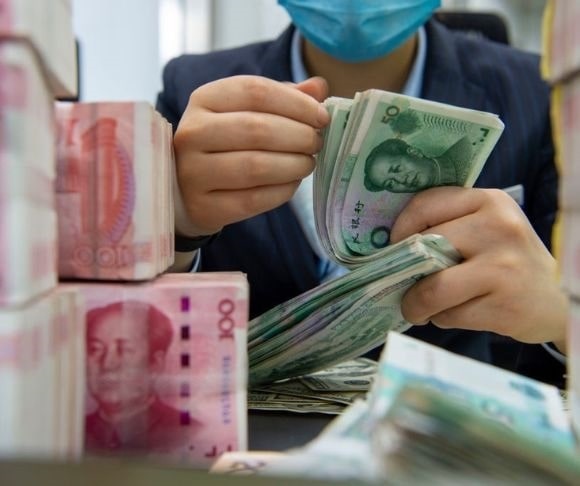Chinese banks are struggling financially again, and clients have started to notice. China recently endured some of the largest protests the nation has experienced since the beginning of the coronavirus pandemic. While officials are trying to resuscitate the economy with stimulus and relief efforts, Beijing might need to extend a bailout for large and small banks in cities and rural areas of the country. Will the financial sector survive, or is it on the brink of ruin following the public health crisis, market manipulation endeavors, and astronomical monetary and fiscal expansion?
Big Trouble for Chinese Banks
Earlier this month, China’s top banking and insurance regulator confirmed that public policymakers would employ “flexibly and precisely” instruments to stabilize the economy. At the same time, financial institutions will facilitate growth by “going all out” to bolster funding. This is part of the central government’s $255 billion plan to revive a slowing economy in the aftermath of the lockdowns.
[substack align=”right”]The government will immediately respond if there are debt default risks in any sector of the economy. This usually consists of bailouts or forcing larger entities to absorb these fledgling firms. Authorities also plan to sell $220 billion in special bonds this year to help accelerate infrastructure spending that could rejuvenate an economy that has been battered and beaten by the COVID Zero strategy.
What does this have to do with bank runs? While Beijing is concentrating on reining in a new problem, the Chinese government has failed to resolve its previous economic hurdles, particularly the property bubble (remember Evergrande?) and skyrocketing debt. Chinese banks have played considerable roles in these subjects – and they are still reeling from these issues since developers are filing for bankruptcy at all-time highs, and Moody’s has downgraded nearly 100 property developers.
Therefore, it is not entirely surprising that several banks in multiple pockets of China froze cash withdrawals. This triggered massive demonstrations outside these institutions, including at the People’s Bank of China (PBoC) branch in Henan’s capital, Zhengzhou. Protesters clashed with police, and others were assaulted by plainclothes officers, media reports show. Finally, after three months, Henan’s banking and insurance regulator intervened and announced that individual customers with up to $7,442 in their accounts would be repaid beginning July 15. Anyone with funds exceeding this amount will likely wait a long time. Similar announcements were made in the other provinces, including Anhui.
As bank runs become more prevalent nationwide, this will be imperative for a nation where the banking system accounts for 350% of gross domestic product (GDP). By comparison, the banking sector accounts for 100% of the US economy. The greater the spread of panic, the more intense bank runs.
The situation is still evolving, said Betty Wang, senior China economist at ANZ, in a July 12 note to clients, writing that the crisis is not entirely over. “Despite the small size of the assets involved, the social impact of the incident could be significant if it is not handled appropriately. It could also trigger another round of regulatory tightening.”

(Photo credit should read CFOTO/Future Publishing via Getty Images)
According to Kyle Bass, the chief investment officer at Hayman Capital Management, the Chinese Communist Party (CCP) will respond with an iron fist to stop a contagion event in the economy.
“China’s banks are insolvent,” Bass recently tweeted. “The CPC is likely to brutally suppress the bank runs in the near term as they can’t allow them to spread further. It’s not just small banks, the biggest crowd over the weekend was found at The Bank of China (one of the largest SOE banks).”
Putting Growth on Credit
China abandoned its campaign of savings and investments long ago, embracing a system of credit, artificial growth, market manipulation, government intervention, and getting drunk on Baiju. After a couple of months of low credit creation amid the pandemic-induced closures, the PBoC is running the printing presses 24/7. The latest central bank data from June show that new yuan-denominated loans are up 13.7% year-over-year, outstanding loan growth is up 11.2% on an annualized basis, total social financing has nearly doubled, and the money supply surged 11.4% from the same time a year ago.
But while this could spark a modicum of economic growth in other advanced economies, strategists from Goldman Sachs and Bloomberg Markets Live agree that this is essentially transferring newly created yuan from one hand to another since government-directed financing will be allocated to state-owned enterprises. So, is China on the cusp of a renewed post-crisis economy? It might provide short-term relief, but long-term setbacks continue to fester in the background.




